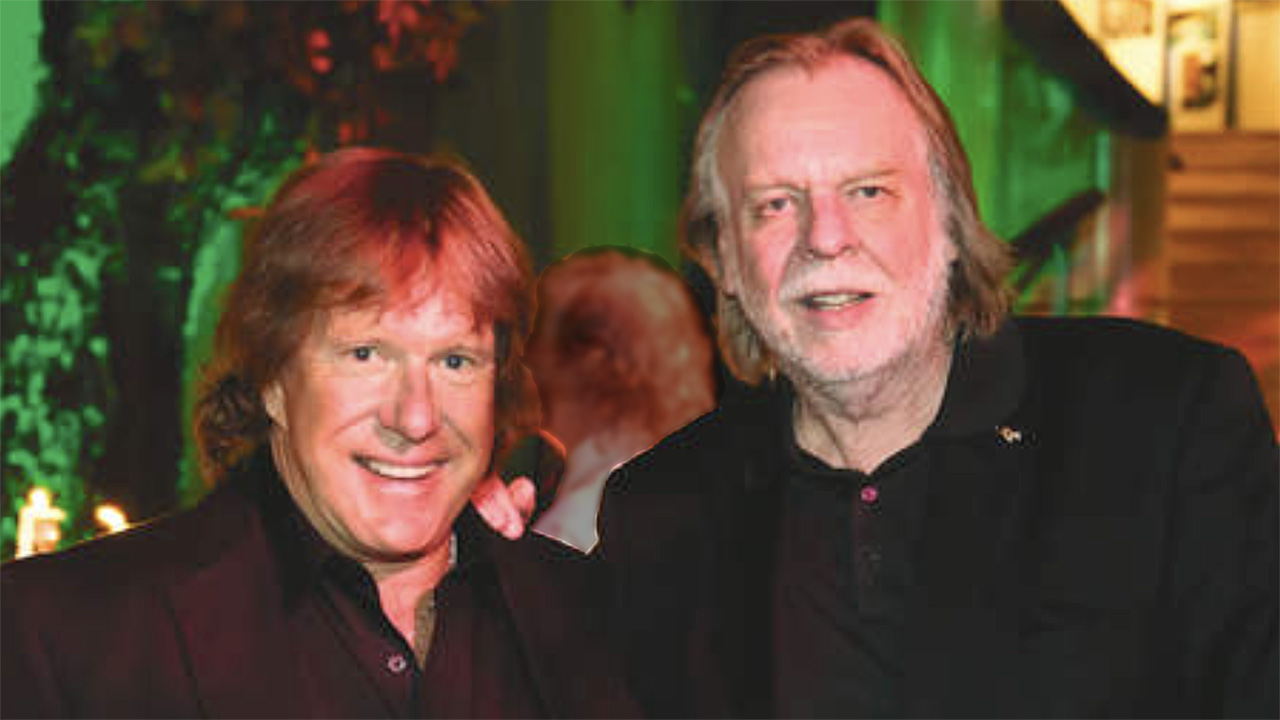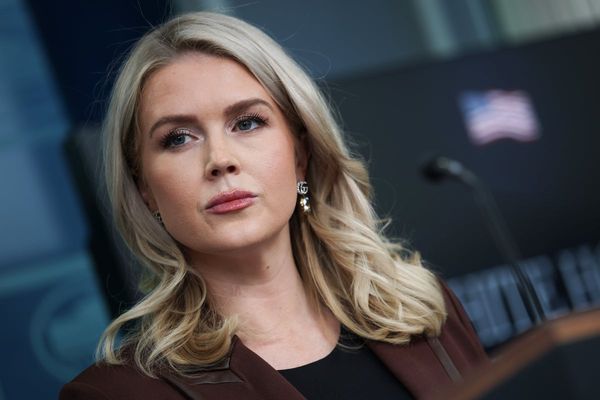
To mark the release of the late Keith Emerson’s Variations box set, Rick Wakeman fondly looks back on his memories with the pioneering musician, sharing details of the concert they planned to play together and the chance of a collaborative album.
The heyday of progressive rock in the 70s was also the heyday of the flamboyant, classically trained keyboard player – the “keyboard wizards” as they were known at the time – and none were more flamboyant than Keith Emerson and Rick Wakeman.
Emerson was never going to be content sitting studiously behind his keyboard. Jimi Hendrix had played his guitar with his teeth, rubbed it over his body and speaker cabinets, and set fire to it. He’d raised the bar high in terms of showmanship and Emerson was keen to claim some of that action. Back in the late 60s, while in The Nice, he stuck knives into the keys of his Hammond L-100 organ to produce a drone, rocked it back and forth to get feedback, appeared to hump it, and at times lay underneath it as if it were humping him, an approach he carried on into the 70s with Emerson, Lake & Palmer.
Although he stopped short of setting fire to the Hammond, he did burn a painting of an American flag at the Royal Albert Hall in June 1968 in protest against the Vietnam War, earning The Nice a lifetime ban from the venue.
While being much kinder to his instruments, Wakeman was also very much a showman with his glittering full-length capes and lavish productions such as 1975’s King Arthur And The Knights Of The Round Table on ice. “Keith and I are very similar in many ways in as much as we didn’t want to be extras, we didn’t want to be bit men. That wasn’t our style at all,” he says.
This prompted rumours in the media that there must be some kind of rivalry between the two keyboard players. “We always sort of thought it was a bit bizarre because we play completely differently and used different instrumentation, and we got on very well,” Wakeman recalls. “Whenever Keith was back in the UK, we’d meet up. I remember one particular lunch [in the early 2000s], I noticed that a couple two tables down were earwigging and interested in what we were saying. Keith noticed that as well.
“When they’d finished their meal, they stopped by our table and the guy said, ‘I’m sorry to disturb you, but can I just say how wonderful it is to see that you’ve made up and you’re friends now.’ Keith went, ‘No, we’re not, we’re just having lunch because I’m suing him!’ The guy went, ‘Oh, I’m sorry.’ Keith had a really good sense of humour and we did laugh a lot.”
The two friends’ paths first briefly crossed when Wakeman was playing with the Strawbs at The Lyceum in early 1971, but they met properly later that year on an American tour – with Yes third or fourth on the bill and ELP second or headlining. “We laughed about it,” says Wakeman. “He said, ‘I watched you through the curtain,’ and I said, ‘Yeah, I watched you through the curtain as well.’ We chatted, but like a lot of bands, the only time you get to see them is when you’re passing in airports, or on the road. But we did bump into each other a lot.”
Five years Emerson’s junior, Wakeman first saw him play in the late 60s. “The Nice were tremendous,” he recalls. “Keith did make an impression, that’s for sure. He worked so well in a trio with bass and drums. And it paved the way for ELP. It was a line-up that he was very comfortable with, because he could have a lot of control and freedom. I saw him on numerous occasions and the same pieces were performed, but were always a little bit different. If he decided to go off on a tangent both Greg [Lake] and Carl [Palmer] were well aware of where he was going.”
Wakeman notes that Emerson also helped liberate the rock keyboard player from the role of accompanist. “The Nice were an organ trio, so everybody could adapt to how loud he could be,” he says. “One of the big problems with keyboards, certainly in bands in the late 60s and early 70s, was [that] guitarists were so loud that when it came to a solo for the organ, or piano or electric piano, the whole band had to drop in volume. Then the wonderful Bob Moog gave us the Moog synthesiser, an instrument that could cut through concrete, and Keith embraced this brilliantly.”
One of Emerson’s main skills was to create a fusion of musical styles. The piano piece High Level Fugue on The Nice’s Five Bridges Suite is a case in point as it appears to be informed by Bach, jazz and boogie-woogie. And while the melodies of classical pieces have been perennially pilfered for songs – and The Nice pottered along with an orchestra playing part of Tchaikovsky’s Pathétique symphony on the live side of Five Bridges – with ELP he explored the leaner, often more angular approach of 20th-century composers such as Bartók, Janácek, Ginastera and Copland, and incorporated that into the group’s music.
“He was an innovator,” Wakeman recalls. “A great jazz player, but he could fuse jazz and rock like nobody else, and fusion is not an easy thing to do. You can’t just go, ‘I’ll do a classical bit here, and a jazz bit here,’ it has to be a natural feel. And he had a good feel for classical, jazz and rock. He had that ability to be able to mix them all in a big bowl together and he was bloody good at it.
“His piano playing was a strange sort of modern classical with jazz thrown in, which was quite unique. He liked to have a crack at anything, really. He did the Piano Concerto [No.1 on Works Volume 1], and he freely admitted to me, ‘That’s ego.’ We discussed that as well: if you haven’t got an ego, you shouldn’t be doing this.”
Emerson wasn’t averse to putting some crunchy dissonances in his playing, such as on Blues Variation from Pictures At An Exhibition. “Keith could take a basic chord and throw a few other things in there that you wouldn’t expect to hear,” explains Wakeman. “It gave him a unique sound.”
For many, Emerson and Wakeman playing together would be a kind of prog dream team. But it’s clearly still a source of annoyance for Wakeman that their respective managers were keen to make sure that it didn’t happen.
“Keith and I had great plans on how to do the concert,” he explains. “Basically, we would start in darkness and then Tarkus or Fanfare For The Common Man would start up but when the lights came on, it wouldn’t be Keith onstage, it’d be me playing it. And then halfway through that there’d be a bit of a swap-over without the audience knowing, and King Arthur would come up and it’d be Keith doing it. We thought that’d be great fun. And then a new piece that we would do together – it would be a great way to open a show. I’ve still got all the notes somewhere. We had quite a few meetings on it.”
They also talked about recording an album together. “We did exchange pieces of music to work on, which excited us a lot about what we could do,” Wakeman recalls. “And we felt we could easily do an album, because our styles are so different it would be really obvious who was doing what.”
They were also keen to team up with Jon Lord to do a three-man keyboard tour with a band, and the three of them were set to play at the Sunflower Superjam all-star charity concert at The Royal Albert Hall in 2011. Wakeman and Lord played a piece called It’s Not As Big As It Was – its title coming from a quip Wakeman made when using the urinal in the gents’ toilet in the building – but Emerson pulled out a few weeks before due to an ongoing neurological condition that was causing problems with his playing.
“He called up and said, ‘Look, I can’t do it, I can’t come over. I don’t want to let everybody down.’ He really was suffering with his hands and arms. I saw Keith on a few occasions when he was over in the UK and was really concerned about his hands. He was quite depressed about it.”
Wakeman remembers that Emerson was very up and down when discussing what he might achieve next. One avenue he had intended to pursue was orchestrating his compositions and learning to conduct. “I remember talking to Keith and I said, ‘Look, just because there are limits to what you can do playing-wise, you’ve got so much more you can offer. You’ve got your compositions. You can do lectures in music. People will love to learn from your experiences.’ But the problem was he wanted to play and everything else was almost secondary.”
Lord passed away with pancreatic cancer in 2012 and Emerson died by suicide in 2016. “It was quite devastating,” Wakeman says. “Because I’d lost my two blood brothers in keyboards.”
Emerson was such a major figure and an influence to so many keyboard players. Had he ever discussed what he wanted to achieve in music? “We talked about music a lot and neither of us went, ‘Oh, aren’t we clever?’ It would be safe to say that Keith and I just wanted to be the best we could at what we did,” Wakeman says. “Neither of us liked being told what to do. But we weren’t trying to change the world. We were trying to throw our bit into the pot, shall we say.”
The 20-CD box set Keith Emerson – Variations covers his career from before The Nice to movie soundtracks, the Keith Emerson group, and his orchestral music. Does Wakeman feel that there’s one aspect of his music that particularly stands out?
“Well, I think you have to say ELP,” he replies. “Because what he did was extremely clever. He took The Nice to a new stage and when you consider how good The Nice were, you think, ‘Can you improve on that?’ Which he did. He found two perfect foils in Greg and Carl, who had come up in early prog rock so understood all of the different fusions, plus suddenly he was able to throw in the wonderful Moog. Music was entering a new era, technology was entering a new era, and they got it spot on. ELP happened at absolutely the right time.
“It’s a tragic end to the story,” he concludes. “But the great thing is that Keith left a lot of happiness and music behind as well, which overrides the sadness. There’ll be people discovering it in 100 years’ time.”







